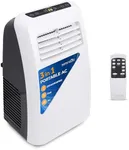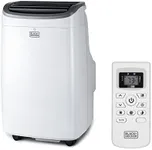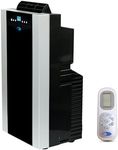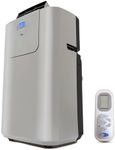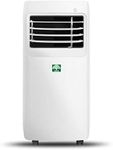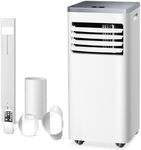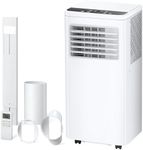Buying Guide for the Best Energy Efficient Portable Ac Unit
Choosing an energy-efficient portable air conditioner (AC) can make a big difference in your comfort during hot weather while also helping you save on electricity bills and reduce your environmental impact. The key is to match the unit’s features and performance to your room size, usage habits, and personal preferences. Understanding the main specifications will help you make a smart choice that keeps you cool without wasting energy.BTU (British Thermal Units)BTU measures the cooling power of the AC unit. A higher BTU means the unit can cool a larger space, but more isn’t always better—if the BTU is too high for your room, the unit may cool too quickly without removing enough humidity, leading to discomfort. For small rooms (up to 200 sq ft), look for units around 8,000 BTU; medium rooms (200-400 sq ft) need about 10,000-12,000 BTU; and large rooms (over 400 sq ft) may require 14,000 BTU or more. To pick the right BTU, measure your room and match it to the recommended BTU range for efficient and comfortable cooling.
EER (Energy Efficiency Ratio)EER tells you how efficiently the AC unit uses electricity to cool your space. A higher EER means better energy efficiency, so the unit will use less power for the same amount of cooling. EER values typically range from 8 to 12 or higher. For the most energy savings, look for a unit with an EER of 10 or above. If you plan to use the AC often or for long periods, prioritizing a higher EER will help keep your energy bills lower.
Room Size CompatibilityThis spec indicates the maximum room size the AC unit can effectively cool. It’s usually listed in square feet. Choosing a unit that matches your room size ensures efficient cooling and avoids overworking the AC. If your room is oddly shaped or gets a lot of sunlight, you might need a slightly more powerful unit. Always check the manufacturer’s recommended room size and compare it to your space for the best results.
Noise LevelNoise level, measured in decibels (dB), tells you how loud the AC will be when running. Lower dB means quieter operation, which is important if you’ll use the unit in a bedroom or office. Portable ACs typically range from 50 to 60 dB. If you’re sensitive to noise or need a peaceful environment, look for units on the lower end of this range.
Dehumidification CapacityThis spec shows how much moisture the AC can remove from the air, usually measured in pints per day. High humidity can make a room feel warmer, so a unit with good dehumidification can improve comfort. If you live in a humid area, look for a higher dehumidification capacity. For drier climates, this feature is less critical.
Portability FeaturesPortability features include wheels, handles, and overall weight, making it easier to move the unit between rooms. If you plan to relocate your AC often, look for lightweight models with sturdy wheels and convenient handles. If the unit will stay in one place, portability is less important.
Programmable Timer and Smart ControlsA programmable timer lets you set the AC to turn on or off at specific times, helping you save energy by only running it when needed. Some units also offer smart controls, like Wi-Fi connectivity or remote operation via smartphone apps. If you want to automate cooling or control the unit remotely, look for these features. If you prefer simple manual controls, you can skip them.
Filter Type and MaintenanceThe filter traps dust and particles, keeping the air clean. Some filters are washable and reusable, while others need regular replacement. If you want low maintenance, choose a unit with an easy-to-clean, washable filter. If air quality is a top concern, look for units with advanced filtration options.

